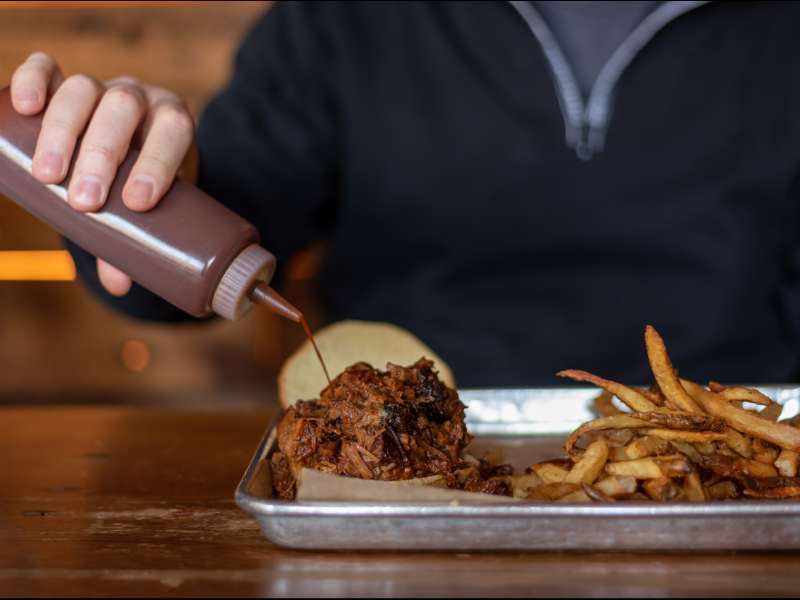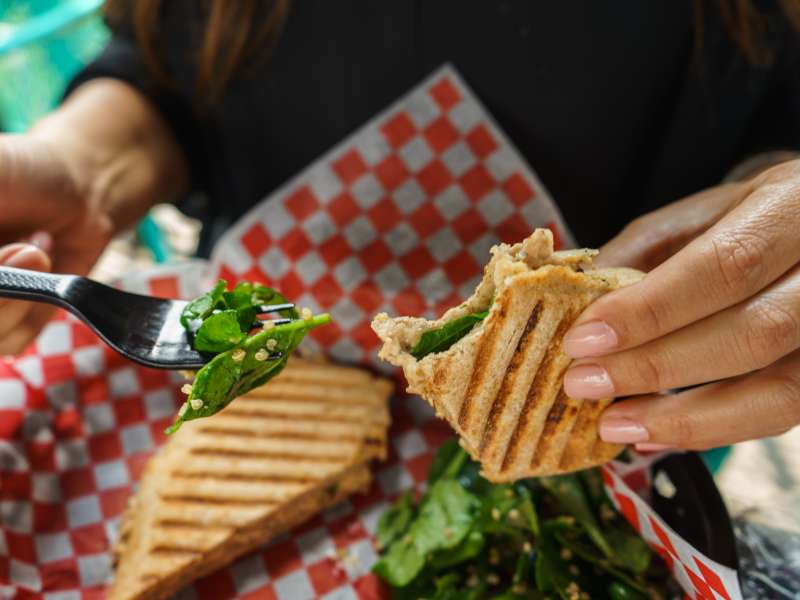Unique beef cuts demonstrate their versatility across menu concepts
The mighty culinary power of beef has delighted chefs and consumers since the first time it was ever put on a menu. Various beef cuts offer depth, flavors, and textures no other protein can match. Chefs experiment across menu concepts and price points to extract all of its comfort food goodness. It’s no surprise there are numerous ideas associated with our favorite red meat. We explore how to leverage a number of different cuts for creative applications—providing solutions and ideas for chefs and operators, no matter the concept. The options are endless.
TRI-TIP
This relatively lean cut of meat is packed with flavor, thanks to its muscular development. A pit master and barbeque-centric operation will want to creatively utilize this cut in lieu of brisket—as tri-tip’s yield loss is significantly better. If sandwiches are on a menu, dry rub, spice, roast, and slice tri-tip for steak sandwiches. Since a sandwich only needs around four ounces of meat, the cost is relatively low. Tri-tip also is a tasty substitute for Italian sausage or pepperoni for a LTO pizza topping. If you’re looking for a high-end offering at a lower price point, consider tri-tip in place of a beef tenderloin. This historically hidden gem is just as tender if cooked just right.
STRIP LOIN
One of the lesser expensive central cuts, the strip loin flexes its versatile muscles from east to west. Use it for Philly cheesesteaks as it carves well, or in place of skirt meat for a carne asada substitute. A Japanese Hibachi restaurant can easily use strip loin as the community beef option, and use the fat and scraps to create an in-house teriyaki sauce. An overlooked application would be the Manhattan cut, which is the three-inch back of the steak (like a peeled filet). Go a step further and cut it into medallions for stew or a beef kabob option.
SHORT RIB
 Short ribs offer a tremendous flavor profile for an exciting comfort food feel. Barbeque menus can smoke it and slather it in sauce. Italian menus can use it for a special ragu or Bolognese sauce, stuffed ravioli, or an espresso-rubbed steak with smoked paprika—giving a truly earthy crust and bite. Or if you want Korean-style ribs, cut widthwise, hang to dry, and marinade for maximum flavor. The rule for short rib is slow and low so it falls right off the bone.
Short ribs offer a tremendous flavor profile for an exciting comfort food feel. Barbeque menus can smoke it and slather it in sauce. Italian menus can use it for a special ragu or Bolognese sauce, stuffed ravioli, or an espresso-rubbed steak with smoked paprika—giving a truly earthy crust and bite. Or if you want Korean-style ribs, cut widthwise, hang to dry, and marinade for maximum flavor. The rule for short rib is slow and low so it falls right off the bone.
INSIDE SKIRT
Though thinner than its outside skirt sibling, the inside skirt cut is as versatile a cut of beef. Typically, this cut is used for Hispanic food in fajitas and carne asada for its intense flavor from all the marbling. Easily marinade the inside skirt for a few hours and throw it on the grill or griddle —this gives operators a nice ROI with the product’s price point. Try the inside skirt for a traditional German rouladen dish, or for the Peruvian lomo saltado. One rule is for certain: keep this cut at medium rare to enjoy its best flavors.
PEELED KNUCKLE
This cut includes three separate muscle groups and demonstrates an incredible yield loss. And it’s a more inexpensive cut. Knuckle’s uses are many: roast beef, cut steaks, and salads. The coastal Carolinas will use it for chicken fried steak. Try pot roasting it with apple and roasted beets (or any yummy combination that fits your concept) because the meat absorbs the flavor components so well.
TOP LOIN BUTT
This inexpensive hind leg cut is tender and packed full of flavor. Slow braise a top loin butt so it falls apart or shreds. A creative Creole application is to replace veal in a grillades and grits dish. Braise it down, cut into medallions, add a tangy tomato sauce—then slowly pour it over grits. You can also cube the steak for a chicken fried steak menu option. Further its uses in a profitable way by portioning it out into steaks for breakfast steak and eggs, or Sunday brunch. This cut is certainly not the butt of any joke.
QUICK BEEF TIPS:
- Prior to cooking, let beef sit at room temperature for 10-25 minutes (depending on the cut)
- After cooking, allow the meat to rest for 2-3 minutes so the juices can redistribute into the bulk.
- Salt beef after cooking. Salting prior extracts moisture from the meat, which could significantly alter leaner cuts.
- Know thy animal. Know the ins and outs of beef cuts to cook items right, leverage your product spend, and creatively develop menu items.
- Rely on the quality of your product. Performance Foodservice offers Angus Choice-Grade Braveheart steaks that are second to none.



